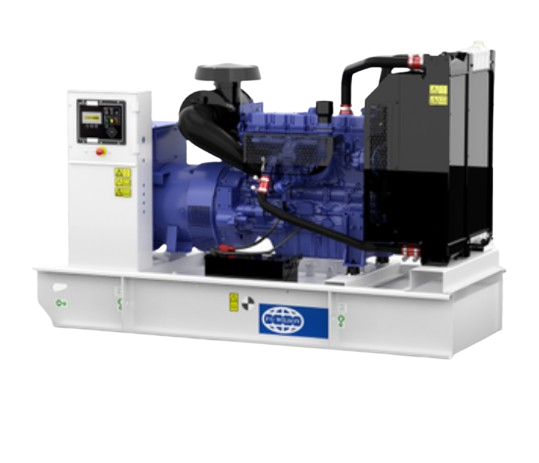Introduction
Summer in the U.A.E. is not just a test of human endurance; it’s also a tough time for machines that power businesses and homes. This triggers a spike in power use, as air conditioning, cooling equipment and other critical infrastructure go to work over periods when temperatures typically rise above 45°C. A dependable backup power source isn’t just a convenience during these peak months, it’s critical.
For businesses that depend on diesel generators, the question is simple but elemental: Is your unit ready to carry the summer load? Preparation Suffice to say, your generator should be ready for anything.
In this blog post, we’ll discuss the essential procedures to get your generator ready for summer and how failing to adapt to seasonal changes can hurt you in the long run, as well as how businesses throughout the UAE can prepare for peak demand.
Why Summer Creates Unique Challenges
The UAE’s summer climate is unlike that of many other regions. Intense heat, coupled with high humidity in coastal areas and dust in desert regions, creates tough working conditions for machinery. Power consumption skyrockets, and even the main grid can feel the pressure, making backup systems more critical than ever.
When operating a diesel generator in UAE, these environmental factors place added stress on the engine, cooling systems, and fuel storage. Without adequate preparation, your generator may fail at the worst possible moment, leaving your business vulnerable to downtime.
Mistake Businesses Make Before Summer
Despite the best of intentions, there are common, costly pitfalls that many businesses fall into which hinder their generator’s efficiency. These errors can involve falling back on old maintenance schedules, forgetting about necessary cooling system checks or putting blind faith in a unit that worked wonderfully in cooler months, but now fails to keep things chilly when summer comes.

Why This Matters
Seasonal peak demand in the summer is more predictable and higher. A generator that only gets used sporadically in the winter, now runs constantly with no off time. There is nowhere for a minor problem, such as one with a filter or cleaner, to run to and hide — nor to escape an overheating from low coolant.
Step 1: Perform a Comprehensive Inspection
Before summer arrives, it’s essential to give your generator a full checkup. This goes beyond routine maintenance and involves preparing the unit specifically for high-demand, high-temperature conditions.
Key Areas to Inspect
- Cooling System: Ensure that radiators, coolant levels, and hoses are in excellent condition. A failing cooling system is one of the most common causes of summer breakdowns.
- Air Filters: Dust storms are frequent in the UAE, and clogged filters restrict airflow, leading to overheating. Replace or clean filters before summer begins.
- Battery Health: Extreme heat reduces battery life. Test and replace weak batteries to avoid starting issues.
- Belts and Hoses: Rubber components wear faster in high heat. Inspect for cracks or soft spots.
Step 2: Fuel Management
Fuel quality directly impacts generator performance, especially in hot weather. Prolonged storage in heat increases the risk of microbial growth and water condensation in diesel fuel.
Best Practices for Summer Fuel Care
- Regular Fuel Testing: Check for contamination and water presence.
- Use Additives if Necessary: Stabilizers help maintain fuel integrity during storage.
- Proper Storage: Keep tanks shaded and sealed to minimize heat-related degradation.
- Schedule Deliveries: Plan fuel deliveries more frequently during summer when usage spikes.
Step 3: Adjusting for Peak Loads
Running a generator at the right load level is vital for efficiency and longevity. Overloading causes overheating, while underloading leads to incomplete combustion and carbon buildup.
How to Optimize Load
- Calculate Anticipated Demand: Factor in extra cooling systems and summer-specific equipment.
- Run Load Tests: Simulate peak demand before summer to ensure your generator can handle the strain.
- Consider Load Balancing: Spread demand across systems to prevent sudden surges.
Step 4: Cooling and Ventilation
The environment where your generator operates makes a big difference. Poor ventilation is a leading cause of overheating, especially during peak summer.
Tips for Better Cooling
- Generator Placement: Ensure adequate airflow around the unit. Avoid enclosed spaces without ventilation.
- Exhaust Systems: Check that exhaust gases are expelled efficiently and not recirculating into the generator area.
- Supplementary Cooling: For units working under extreme loads, additional fans or air conditioning may be needed in the generator room.
Step 5: Regular Testing and Monitoring
Even with preventive measures, ongoing monitoring during summer is crucial. Testing ensures you catch issues before they escalate.
Best Practices
- Weekly Test Runs: Operate the generator under load for at least 30 minutes.
- Use Monitoring Systems: Install digital monitoring tools to track performance in real time.
- Record Data: Keep logs of performance, fuel consumption, and temperature fluctuations.
Step 6: Training Your Staff
A generator is only as reliable as the people operating it. Staff need to understand not just how to run the unit, but how to recognize early warning signs.
Training Essentials
- Emergency Procedures: How to switch loads safely during an outage.
- Basic Troubleshooting: Recognizing overheating, leaks, or unusual noises.
- Safety Protocols: Proper handling of fuel and awareness of fire hazards.
Step 7: Professional Servicing
While in-house checks are important, nothing replaces professional servicing. Certified technicians can spot issues that aren’t visible to the untrained eye.
When businesses depend on a diesel generator in uae during peak season, professional oversight ensures compliance with safety regulations and maximizes reliability.
Why Professional Support Matters
- Advanced Diagnostics: Access to tools and expertise that catch hidden problems.
- Compliance Checks: Ensuring your generator meets local emission and safety standards.
- Peace of Mind: Knowing your generator has been professionally cleared for heavy-duty operation.
Step 8: Preparing for Emergencies
Even with the best preparation, emergencies can occur. Having a plan ensures you’re not caught off guard.
What to Include in Your Plan
- Backup Fuel Supply: Agreements with suppliers for priority delivery.
- Spare Parts Kit: Stock items like filters, belts, and coolant.
- Service Provider Contact: Keep a trusted technician on speed dial for urgent repairs.
Step 9: Planning for Long-Term Reliability
Summer is just one season, but the way you prepare now affects your generator’s lifespan. A proactive approach reduces repair costs and downtime over the years.
Long-Term Practices
- Annual Servicing Contracts: Secure ongoing support from reliable providers.
- Data Analysis: Use performance logs to predict future needs.
- Upgrade Considerations: If your generator consistently struggles with demand, it may be time to invest in a larger or more efficient unit.
Conclusion
As the UAE braces for another intense summer, businesses must ensure their generators are ready for peak demand. From inspecting cooling systems to managing fuel, optimizing loads, and scheduling professional servicing, every step counts. Neglecting preparation risks costly breakdowns and operational disruptions just when reliable power is most critical.
A diesel generator is more than just a backup machine—it’s a safeguard for business continuity. By preparing thoroughly for the summer peak load, you ensure your operations stay resilient, efficient, and uninterrupted, no matter how high the temperature climbs.


